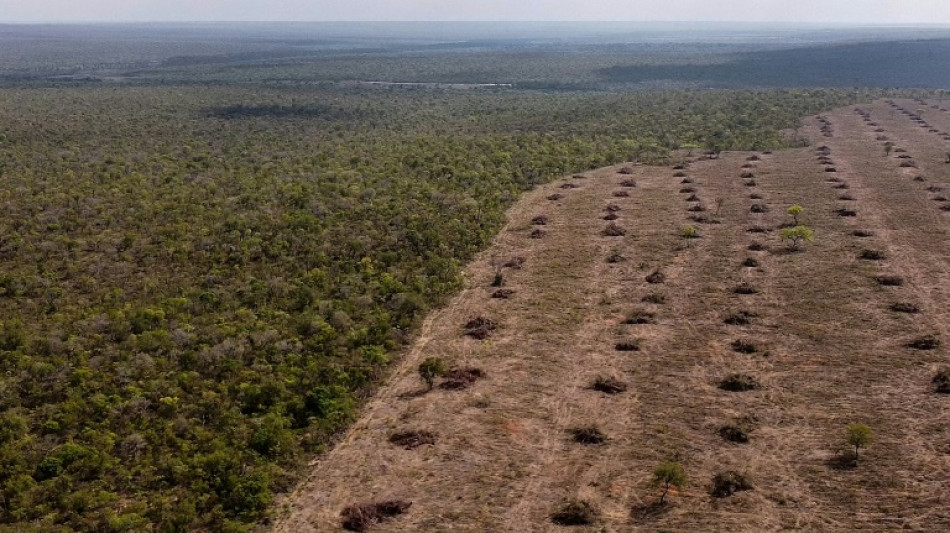

Brazil's Cerrado: a guide
Splashed across the middle of Brazil, the "Cerrado" may be the most important place most people have never heard of, a vast tropical savanna experts say is crucial to the planet's health but quickly disappearing.
Here are some fast facts.
- Little-known giant -
Less famous than the Amazon rainforest above it, the Cerrado is one of Earth's three great savannas, along with Africa's and Australia's.
Spanning two million square kilometers (770,000 square miles), with its western edges extending into Bolivia and Paraguay, the region is the size of France, Germany, Italy, Spain and the United Kingdom combined.
- 'Cradle of waters' -
According to UNESCO, the Cerrado is the world's most biodiverse savanna, home to more than 11,000 plant species and hundreds of animal species, including jaguars, maned wolves and giant anteaters.
Nicknamed the "cradle of waters," it feeds eight of South America's major river systems and three key aquifers.
- Amazon link -
Scientists say the Cerrado and Amazon are intricately linked.
The savanna depends on the rainforest to generate the precipitation that fills its rivers and aquifers. The rainforest in turn depends on the savanna to feed the waterways that crisscross its southern half.
Both play a crucial role in containing climate change by absorbing carbon from the atmosphere.
Conversely, both could accelerate global warming if they are pushed past a "tipping point," when their vegetation would die off and release its carbon stores, scientists say.
- From wilderness to farmland -
In recent decades, the Cerrado has become an agricultural heartland, propelling Brazil past the United States to become the world's top exporter of soybeans and, this year, corn, as well as a top cotton producer.
Half the Cerrado has now been converted to farmland, according to research group MapBiomas.
- Collateral damage -
But the boom, a major growth driver for Latin America's biggest economy, has a cost.
According to calculations by the World Wildlife Fund (WWF), converting savanna to farmland in the Cerrado generates 230 million metric tons of carbon a year, equivalent to the annual emissions of 50 million cars.
In a region conservationists say is being dried out by deforestation, over-irrigation and climate change, satellite monitoring by Brazilian space agency INPE has recorded nearly 40,000 fire outbreaks this year.
They have burned an area nearly the size of Switzerland, according to MapBiomas.
Studies have also found the Cerrado's water supplies are contaminated by pesticides and weedkillers.
W.Guerrero--RTC



